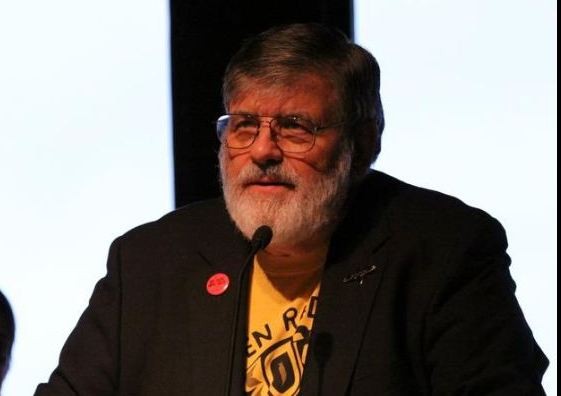20. 09. 2012
Radio, Revolutionary Stealth
In 1954 the experts said TV had replaced radio. Video killed the Radio Star. TV was king. Radio stations in the US sold at a fraction of their value until a series of entrepreneurs, living far away from the recognized cultural centers (innovation often originates far from the centers of power and culture) in places like Kansas City and Cleveland, found that Radio could serve a new group of listeners ignored by the media establishment.

Disc Jockeys started mixing up Black rhythm and blues music with white country and western and created what Cleveland Disc Jockey Allen Freed called Rock n’ Roll. The establishment attacked Rock as being “a Communist Plot” to undermine the morality of American youth. American youth loved it. Soon stations that had sold for about a hundred thousand dollars were selling for ten million as AM radio brought a new type of music to birth. Radio became commercially important while leading the rock and roll revolution. Many people believe radio enabled racial integration in the US by making it possible for white kids to dance to black music.
Many AM stations had FM affiliates that repeated the AM programs. In the mid 1960s the FCC in the US mandated that FM stations program separately from AM. The companies that owned the stations didn’t want to bear the expense of separate programs so they let young employees do their thing, “Playing on the FM Band,” as the title of one book at the time put it. The FM spectrum was not highly valued so local community groups were able to pick up FM licenses for very little money. Those stations played music produced in stereo, like “Sergeant Pepper” and Bob Dylan’s “Folk Rock.” It sounded good on FM. These stations became the voice of the youth rebellion in the late 1960s, the voice of the Anti Viet Nam war movement. These stations evolved into two separate streams of radio in the US, One very profitable classic rock and Adult Acoustic Alternative stations and the other community stations that evolved into National Public Radio.
In the late 1970s AM stations, again, became next to worthless. They lost their music listeners to better sounding FM. One trade paper seriously told station owners, in an article “Making Money from your AM Station,” to shut down their stations and sell the property on which the antenna sat for shopping centers. One of the biggest shopping centers outside St. Paul, Minnesota has the address “Radio Drive.” But then some smart programmers decided to find an audience that viewed itself as underserved. Amazingly it was older white men who felt left behind by the youth revolution. Talk Radio was born and many stations that had been the powerhouse rockers of the late ‘50s and early ‘60s became the powerhouse talkers of the ‘80s, ‘90s and 00s.
In Europe radio developed differently, but frequencies that authorities felt were “throwaway low power” served as an instrument of social change. Look at the early days of B92 and Radio Index in Serbia and Radio 101 in Croatia and the dozens of local stations in each country that produced independent information. Radio, because it is not as popular as TV, has always had a certain amount of freedom to experiment and innovate. It was below the radar until it helped give birth to the “next new thing.” That could be either in the realm of music or ideas
In the developing world radio is also having a rebirth in the form of very local, community radio. In Indonesia and sub Sahara Africa, local radio frequencies that were ignored by large state broadcasters are becoming instruments of social and political change by broadcasting very local news and service information. In the Arab world there are indications that as national TV services fall prey to the international satellite TV services and lose viewers new local community radio stations may be poised to fill the gap for local news that satellite TV cannot fill.
Meanwhile, in the US, radio has been pronounced dead again. With podcasting, satellite radio, internet radio, the iPod and telephone downloads experts are telling radio station owners that they need to start thinking of doing something new. But radio has a self-correcting mechanism. When stations lose value they fall into the hands of creative people looking for an outlet for something new and that “new” can become “revolutionary.” As station owners you have that opportunity. It is risky, but Radio has remained successful only because it has embraced change. The opportunities now, I believe, are tie ins with social media, developing an even closer relationship with listeners, while delivering service on multiple platforms, on line, on phone, on air. The future of radio is with those who embrace change. Ignore radio at your peril.
***
Rich McClear is a broadcaster from Alaska who has worked for almost 20 years helping stations develop in emerging markets. He was Director of the Serbian Media Assistance Program from 2008-2011.